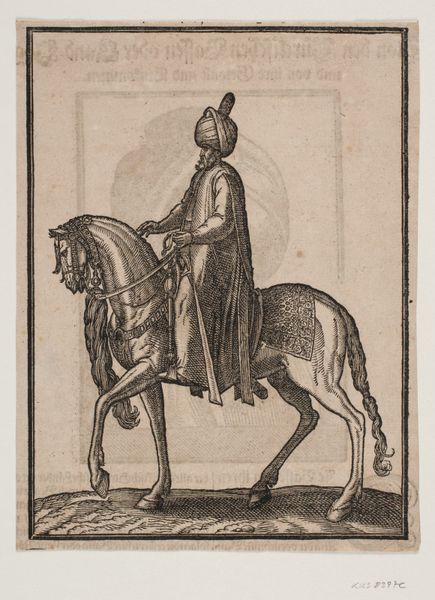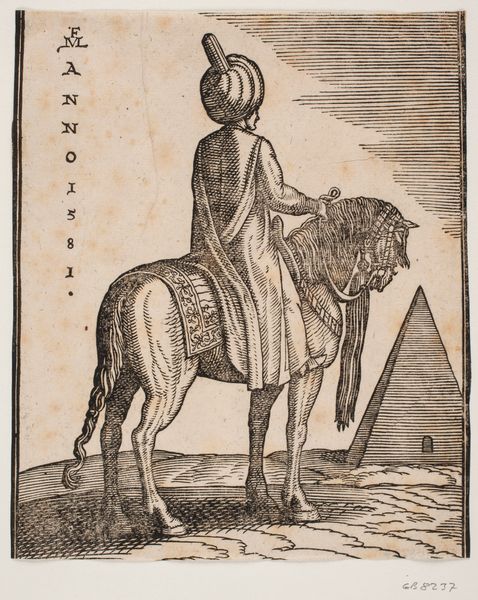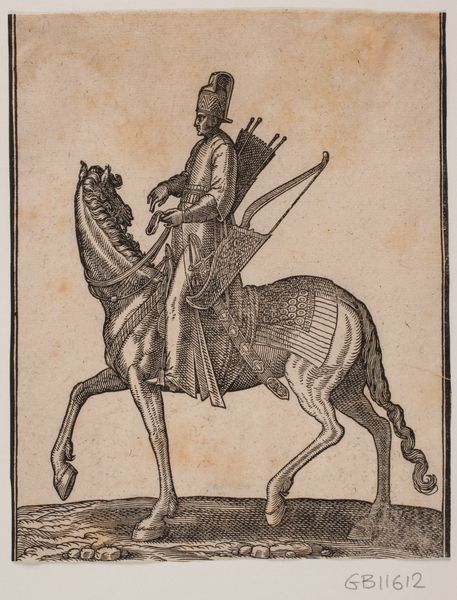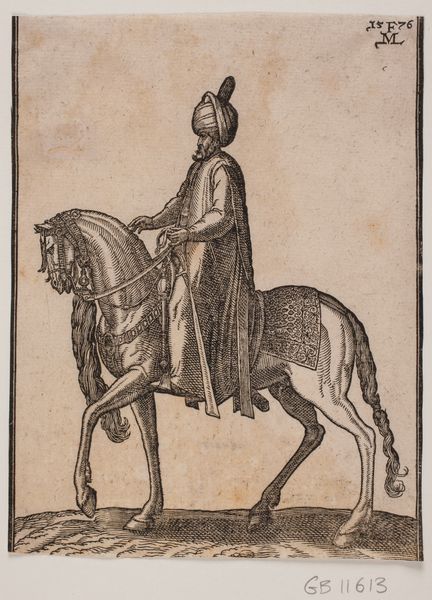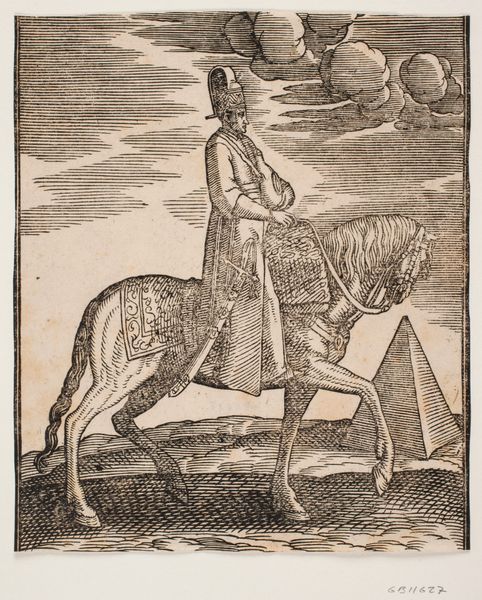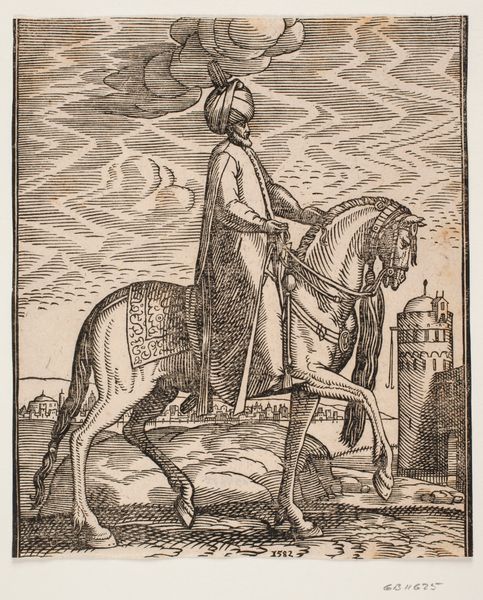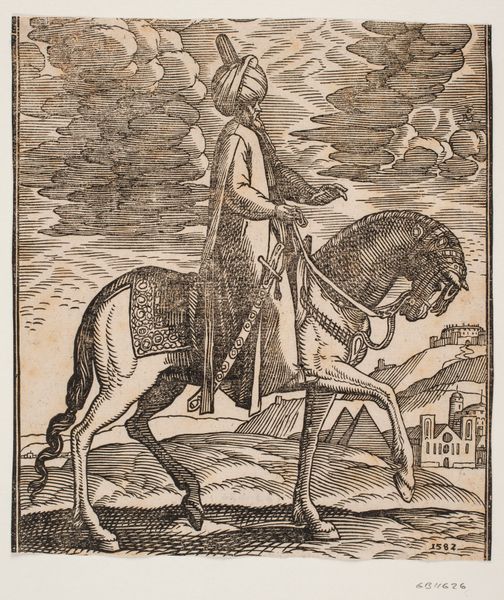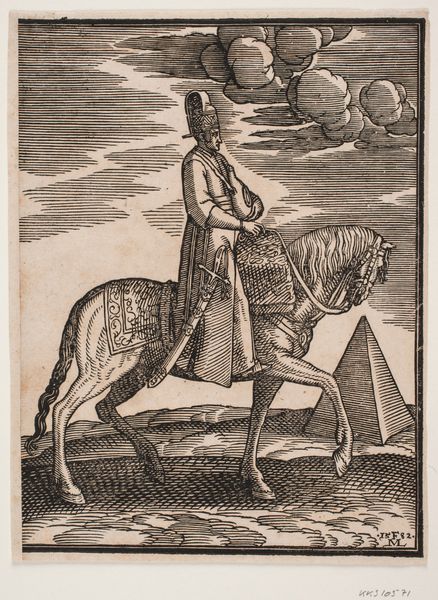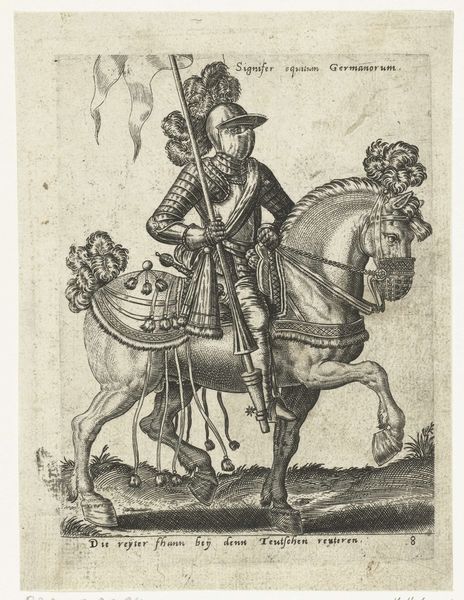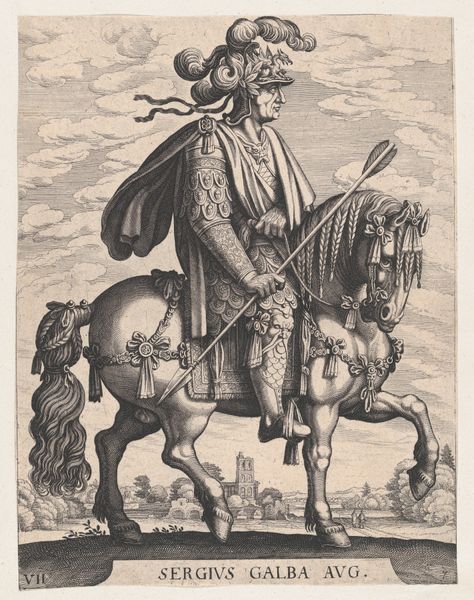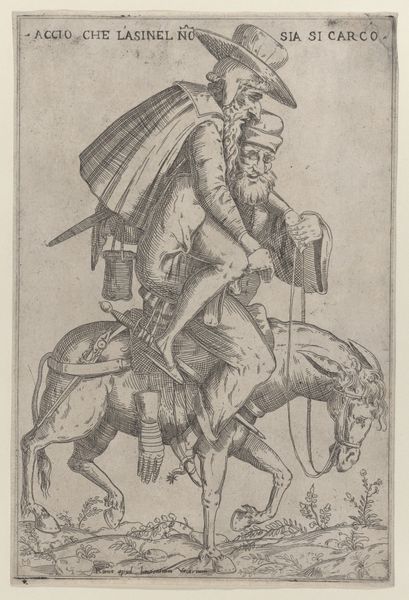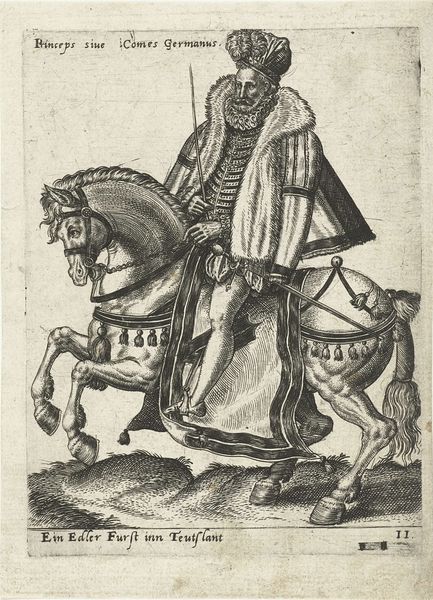
Turban-clad rider with a sword at his right side and a war-club in his left hand, profile towards the right; in the background, an obelisk 1582
0:00
0:00
drawing, print, ink, woodcut, engraving
#
drawing
#
ink drawing
#
narrative-art
# print
#
asian-art
#
landscape
#
figuration
#
11_renaissance
#
ink
#
woodcut
#
engraving
Dimensions: 210 mm (height) x 167 mm (width) (bladmaal)
Editor: This is "Turban-clad rider with a sword at his right side and a war-club in his left hand, profile towards the right; in the background, an obelisk," created in 1582 by Melchior Lorck. It seems to be made with ink using the engraving technique. The detailed linework almost gives it the feeling of an architectural blueprint, although the subject matter is much more… organic. What are your initial thoughts on the formal elements here? Curator: Indeed. I am immediately drawn to the strong contrast between the tightly controlled, almost mechanical lines of the landscape and sky, versus the relatively more curvilinear and softer lines used to depict the rider, his horse, and their accoutrements. Note, also, how the obelisk in the background, a symbol of permanence, is rendered using similar lines to those that constitute the landscape. How does this influence our perception of its role? Editor: That's interesting. It creates a visual harmony, doesn’t it? Almost like the rider and his culture are a natural part of this landscape. But does the density of lines also play a part? The darker regions seem to delineate importance, giving form to the rider while simplifying the background to emphasize the central subject. Curator: Precisely. Lorck's choices here are not merely representational; they serve to guide the viewer’s eye and establish a hierarchy within the composition. Look at the diagonal lines across the sky versus the tightly woven detail of the horse’s harness. Do these textural differences influence our reading of the work? Editor: I think it makes me focus more on the textures and intricacies of the figure itself, which in turn highlight the exotic otherness of the man to his presumed European audience, which contrasts a bit with him feeling organic to the landscape as we initially thought. Curator: Well observed. I appreciate how attending to the textural details enriches the understanding of the artist's compositional strategy and possible intention. The sum becomes so much more than its individual elements. Editor: This was really interesting, and seeing it through a formal lens opened up a lot of possibilities. Thank you!
Comments
No comments
Be the first to comment and join the conversation on the ultimate creative platform.
